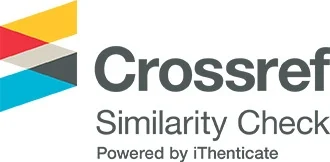Antimycobacterial Effect of Naphthoquinone Natural Derivatives Identified in Henna leaves against Three Target Enzymes by Molecular Docking.
DOI:
https://doi.org/10.65137/lmj.v10i2.275Abstract
Background:
Tuberculosis (TB) remains a major health threat, aggravated by rising drug resistance and treatment toxicity. Henna (Lawsonia inermis) is a plant commonly used in traditional medicine and folk cosmetics. The plant has topical anti-fungal effect, protect sunburn; topical analgesic and relief inflammation. However, their mechanism of action against Mycobacterium tuberculosis is not yet fully characterized.
Objective:
The present study aimed to evaluate the antimycobacterial effect of naphthoquinones natural derivatives from henna leaves extract against M. tuberculosis by computational approach targeting three essential Mycobacterium enzymes involved in bacterial growth and survival; and to identify the interactions between the derivatives and the target protein.
Methods:
The plant leaves were extracted by maceration in methanol and then subjected to GC-MS analysis and naphthoquinones derivatives were identified. Thereafter, the derivatives were investigated by molecular docking against mycobacterial target proteins including: Protein kinase G (PknG, PDB ID: 3CKQ), 4-diphosphocytidyl-2C-methyl-D-erythritol cytidyltransferase (IspD) and UDP-glucose-specific glycosyltransferase.
Results:
The docking results revealed that four Naphthoquinone compounds, 5-Hyroxy-1,4 Naphthoquinone, 2-Amino-3-chloro-1,4 Naphthoquinone and Coumarin-3-carboxylic acid exhibited binding affinities of −7.6, −8.2, −9.0, and −12.5 kcal mol−1 respectively, against protein kinase G, IspD and UDP-glucose-specific glycosyltransferase. Coumarin-3-carboxylic acid was a most promising candidate among the derivatives investigated achieved optimal binding stability and high inhibitory potential.
Conclusion:
The molecular docking analysis showed a significant antituberculosis potential of naphthoquinone derivatives found in henna leaves, particularly Coumarin-3-carboxylic acid as a promising lead for PknG inhibition. These findings provide a rationale for further biological validation and development of novel phytochemical-based therapeutics against drug-resistant TB. Further validating an in vivo activity of derivatives will be recommended.
Downloads
Published
Issue
Section
License
Copyright (c) 2025 Lebda Medical Journal

This work is licensed under a Creative Commons Attribution-NoDerivatives 4.0 International License.








